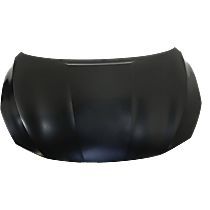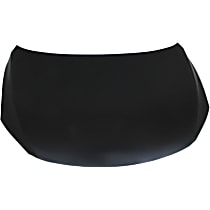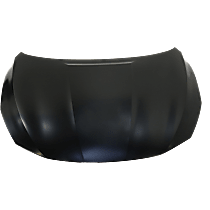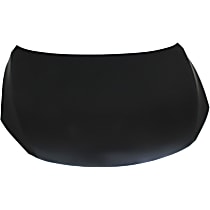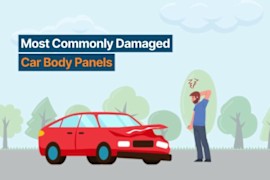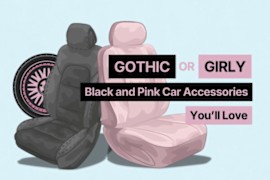{
"lazyNodes": false,
"abFitnotesFlag": false,
"abCrawlReviews": false,
"productOptionsCookie": false,
"orderDelayFlag": false,
"skipSessionCookie": false,
"covidMessage": false,
"fullTitleCookie": false,
"nrLoggerCookie": false,
"checkoutReviewCookie": false,
"productOptionSeqCookie": false,
"maintenanceFlag": false,
"bufferETACookie": false,
"multiShippingDiscountFlag": false,
"newFitmentFlag": false,
"surveyOptInFlag": false,
"crossSellFlag": false,
"skuMappingFlag": false,
"paySplitCookie": false,
"callDisableFlag": false,
"zipPaymentFlag": "u",
"hassleFreeReturn": false,
"lifetimeReplacement": false,
"cpn_off": false
}Nissan Sentra Hoods
Shop Catalog
![]() WARNING: This product can expose you to chemicals including Di-isodecyl phthalate, Diisononyl phthalate, Lead and lead compounds, Nickel, which is known to the State of California to cause cancer and birth defects or other reproductive harm. For more information go to www.P65Warnings.ca.gov.
WARNING: This product can expose you to chemicals including Di-isodecyl phthalate, Diisononyl phthalate, Lead and lead compounds, Nickel, which is known to the State of California to cause cancer and birth defects or other reproductive harm. For more information go to www.P65Warnings.ca.gov.
![]() WARNING: This product can expose you to chemicals including Di-isodecyl phthalate, Diisononyl phthalate, Lead and lead compounds, Nickel, which is known to the State of California to cause cancer and birth defects or other reproductive harm. For more information go to www.P65Warnings.ca.gov.
WARNING: This product can expose you to chemicals including Di-isodecyl phthalate, Diisononyl phthalate, Lead and lead compounds, Nickel, which is known to the State of California to cause cancer and birth defects or other reproductive harm. For more information go to www.P65Warnings.ca.gov.
![]() WARNING: This product can expose you to chemicals including Di-isodecyl phthalate, Diisononyl phthalate, Lead and lead compounds, Nickel, which is known to the State of California to cause cancer and birth defects or other reproductive harm. For more information go to www.P65Warnings.ca.gov.
WARNING: This product can expose you to chemicals including Di-isodecyl phthalate, Diisononyl phthalate, Lead and lead compounds, Nickel, which is known to the State of California to cause cancer and birth defects or other reproductive harm. For more information go to www.P65Warnings.ca.gov.
![]() WARNING: This product can expose you to chemicals including Di-isodecyl phthalate, Diisononyl phthalate, Lead and lead compounds, Nickel, which is known to the State of California to cause cancer and birth defects or other reproductive harm. For more information go to www.P65Warnings.ca.gov.
WARNING: This product can expose you to chemicals including Di-isodecyl phthalate, Diisononyl phthalate, Lead and lead compounds, Nickel, which is known to the State of California to cause cancer and birth defects or other reproductive harm. For more information go to www.P65Warnings.ca.gov.
![]() WARNING: This product can expose you to chemicals including Di-isodecyl phthalate, Diisononyl phthalate, Lead and lead compounds, Nickel, which is known to the State of California to cause cancer and birth defects or other reproductive harm. For more information go to www.P65Warnings.ca.gov.
WARNING: This product can expose you to chemicals including Di-isodecyl phthalate, Diisononyl phthalate, Lead and lead compounds, Nickel, which is known to the State of California to cause cancer and birth defects or other reproductive harm. For more information go to www.P65Warnings.ca.gov.
![]() WARNING: This product can expose you to chemicals including Di-isodecyl phthalate, Diisononyl phthalate, Lead and lead compounds, Nickel, which is known to the State of California to cause cancer and birth defects or other reproductive harm. For more information go to www.P65Warnings.ca.gov.
WARNING: This product can expose you to chemicals including Di-isodecyl phthalate, Diisononyl phthalate, Lead and lead compounds, Nickel, which is known to the State of California to cause cancer and birth defects or other reproductive harm. For more information go to www.P65Warnings.ca.gov.
![]() WARNING: This product can expose you to chemicals including Di-isodecyl phthalate, Diisononyl phthalate, Lead and lead compounds, Nickel, which is known to the State of California to cause cancer and birth defects or other reproductive harm. For more information go to www.P65Warnings.ca.gov.
WARNING: This product can expose you to chemicals including Di-isodecyl phthalate, Diisononyl phthalate, Lead and lead compounds, Nickel, which is known to the State of California to cause cancer and birth defects or other reproductive harm. For more information go to www.P65Warnings.ca.gov.
![]() WARNING: This product can expose you to chemicals including Di-isodecyl phthalate, Diisononyl phthalate, Lead and lead compounds, Nickel, which is known to the State of California to cause cancer and birth defects or other reproductive harm. For more information go to www.P65Warnings.ca.gov.
WARNING: This product can expose you to chemicals including Di-isodecyl phthalate, Diisononyl phthalate, Lead and lead compounds, Nickel, which is known to the State of California to cause cancer and birth defects or other reproductive harm. For more information go to www.P65Warnings.ca.gov.
![]() WARNING: This product can expose you to chemicals including Di-isodecyl phthalate, Diisononyl phthalate, Lead and lead compounds, Nickel, which is known to the State of California to cause cancer and birth defects or other reproductive harm. For more information go to www.P65Warnings.ca.gov.
WARNING: This product can expose you to chemicals including Di-isodecyl phthalate, Diisononyl phthalate, Lead and lead compounds, Nickel, which is known to the State of California to cause cancer and birth defects or other reproductive harm. For more information go to www.P65Warnings.ca.gov.
![]() WARNING: This product can expose you to chemical which is known to the State of California to cause cancer and birth defects or other reproductive harm. For more information go to www.P65Warnings.ca.gov.
WARNING: This product can expose you to chemical which is known to the State of California to cause cancer and birth defects or other reproductive harm. For more information go to www.P65Warnings.ca.gov.
![]() WARNING: This product can expose you to chemical which is known to the State of California to cause cancer and birth defects or other reproductive harm. For more information go to www.P65Warnings.ca.gov.
WARNING: This product can expose you to chemical which is known to the State of California to cause cancer and birth defects or other reproductive harm. For more information go to www.P65Warnings.ca.gov.
![]() WARNING: This product can expose you to chemical which is known to the State of California to cause cancer and birth defects or other reproductive harm. For more information go to www.P65Warnings.ca.gov.
WARNING: This product can expose you to chemical which is known to the State of California to cause cancer and birth defects or other reproductive harm. For more information go to www.P65Warnings.ca.gov.
![]() WARNING: This product can expose you to chemical which is known to the State of California to cause cancer and birth defects or other reproductive harm. For more information go to www.P65Warnings.ca.gov.
WARNING: This product can expose you to chemical which is known to the State of California to cause cancer and birth defects or other reproductive harm. For more information go to www.P65Warnings.ca.gov.
![]() WARNING: This product can expose you to chemical which is known to the State of California to cause cancer and birth defects or other reproductive harm. For more information go to www.P65Warnings.ca.gov.
WARNING: This product can expose you to chemical which is known to the State of California to cause cancer and birth defects or other reproductive harm. For more information go to www.P65Warnings.ca.gov.
![]() WARNING: This product can expose you to chemicals including Di-isodecyl phthalate, Diisononyl phthalate, Lead and lead compounds, Nickel, which is known to the State of California to cause cancer and birth defects or other reproductive harm. For more information go to www.P65Warnings.ca.gov.
WARNING: This product can expose you to chemicals including Di-isodecyl phthalate, Diisononyl phthalate, Lead and lead compounds, Nickel, which is known to the State of California to cause cancer and birth defects or other reproductive harm. For more information go to www.P65Warnings.ca.gov.
Top Rated Products
Customer Guides
Nissan Sentra Hood Troubleshooting Made Easy
Your Nissan Sentra's hood protects most of the important, internal components of your vehicle. As such, it is important that it stays in great condition. However, problems do rise up eventually that would wear down your hood. Prevention is better then cure, they say, and thus, here are some common problems you could encounter in regards to the hood, and their respective causes:
Dents and scratches
Fender bender is a common term for those small car accidents that damage your vehicle. This usually happens around parking areas or city roads where there is a high car density. These fender benders are the ones that cause those scratch lines and tiny dents around the hood. Aesthetically, it is going to make your vehicle look like it is worth less than it is supposed to be. Furthermore, if kept unchecked, these types of damage will pile up and cause more trouble. Before and after driving, do a quick inspection around the hood area. Scratches and dents are very visible, so if you see them, repaint them or take some time during the weekend to work on them.
Rust patches and holes
These are often the result of prolonged neglect of the first problem listed. Remember the thing about the problems building up? This is the trouble. Adding to that the harsh elements directly harming the hood because of its now unprotected state, and you got yourself a corrosion issue. If the contamination only affects a small area, the size of a cookie or a small book for exemple, then you can still fix it with some simple welding and mechanical know-how. However, if it has spread into huge proportions, then there is nothing you can do but to simply replace the hood with a new one.
Rattling noises
If you are starting to hear this around the front of your car while driving, then you better check the condition of the hood's hinges. These are the ones that connect the hood to the main body of the vehicle, as well as hold it in place. Sometimes they get loose, or some incident causes them to malfunction, and sometimes they could simply fall off and disappear. Whatever the case, you either secure it to position if it is still there, and if not, then you do not have much of a choice, do you?
The hood of your Nissan Sentra acts as a formidable gate, protecting your car's most important systems such as the engine, ignition, and fuel injection, as well as providing easy access to the owner. Even if you are the world's safest driver, other are not. Thus, your hood is eventually going to take damage. Before your hood becomes a wreck, it is best to keep it maintained regularly. Here are some simple maintenance tips to keep it as good as new:
Repaint scratches.
Scratches happen sooner or later, whether you like it or not. These could really ruin the look of your car, so it is best to remedy them quickly. When repainting the scratched part, always make sure that you get the exact same color of paint as the one in your car, down to the very shade. Even a slight difference in paint color could spell disaster for your car's visuals. Also, take note that when repainting, apply only enough layer of coating to cover up the scratches. Do not overdo it, else it would look very uneven.
Tighten hinges.
Do this whenever you start to hear any rattling sounds coming from the hood of your car. This usually signifies that the hood is losing its grip from the main body, and it might suddenly just pop up at any time. If this happens while you are driving, that few seconds where you are suddenly blinded would cause you a vehicular accident. Check if the hinges are loose or not is as easy as giving them a little nudge. Just take your trusty screwdriver and any loose screws.
Grind off the rust.
Corrosion occurs when the damage accumulated has been too great. Do not fret, though, because if the contamination is small enough, it can still be saved. Use an orbital sander to remove all rust. Make sure you grind it thoroughly, else the problem would just come back. For more assurance, drop some phosphoric acid onto the infected part. After that, you woul probably need to do some repainting, but at least it is better than having to replace the whole thing.
What's the difference between a steel and a carbon fiber Nissan Sentra hood?
The most notable difference between steel and carbon fiber car hoods is the weight. A carbon fiber or CF hood is much lighter than steel, which makes it an excellent OE replacement for high-performance cars. Since it's very lightweight, it doesn't hamper the vehicle's aerodynamics. Moreover, it adds a custom look to cars and allows automobiles to cool down very quickly--thanks to holes and grates on top of the hood. On the other hand, a steel hood is rather bulky and is perfect for a sedan like the Nissan Sentra. Although it is heavy, a steel hood works well in cooling the engine of a car. It is also highly durable, which makes it perfect for everyday driving.
Why do car hoods become stuck?
Car hoods become stuck when the latch is broken or when dirt has accumulated on the latching mechanism. On other occasions, car hoods are difficult to open when the hood-release cable is already worn or if the hood itself is bent. Whatever the reason may be, it's best to have another person around when troubleshooting the problem. That way, one can try prying the hood open while the other can pull the release handle from inside the vehicle.
How can one know if the latch on a car hood is jammed? How can the hood be opened?
If pulling on the hood release latch does not pop the hood open, that means the latch is stuck. The best way to confirm if this is indeed the case is to peek through the grilles and point a flashlight to the latch. The hood can be opened by pushing down on the hood while another person pulls the hood release. Sometimes, the latch needs to be manually pushed back with a screwdriver. Once the hood opens, spray the latch with a lubricant to prevent it from becoming stuck again.
